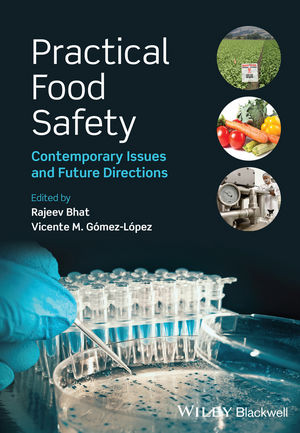Practical tips to excel at snack and bakery facility food safety audits

The more plant personnel who participate in your facility’s food safety audit, the better. These educational experiences allow your staff to engage with the audit process and improve their food safety knowledge.
At a minimum, it is strongly recommended that your self-inspection team and internal audit team participate with the auditor. It’s a great way for them to enhance their inspecting and auditing skills. A good auditor will explain what he or she is looking at as they work in a given area. In addition, they will provide comments on positive findings in addition to non-compliances. This is an excellent learning tool and is also beneficial for staff working in the area being audited to participate to give them a fresh perspective on their impact on food safety.
Plant personnel should understand that it is “their audit” and they should be questioning the auditor to learn as much as they can. In addition to the self-inspection and internal audit teams, it is strongly advised that senior management, such as the plant manager, participate in the audit. Not only does this demonstrate management commitment to the auditor and plant personnel, but it also allows the plant manager to gain a holistic view of food safety in the plant, rather than learning of food safety strengths and weakness secondhand. Plant managers have a legal and moral obligation to ensure food safety in their facilities.
Necessary preparations
Interacting with an inspector can be intimidating. The best way to prepare personnel is to role-play with them. This should be part of the routine self-inspection and internal audit process. Either an area supervisor or a member of the self-inspection team or internal audit team should be conducting interviews with line employees to get them used to the process. A good auditor will use verbal and nonverbal cues to put the employee at ease. The auditor might start with some very basic questions to help relax the line employee. These are questions such as: “What is your name?” “How long have you worked here?” “Is this your regular shift?” After this introduction, the line employee should expect to be asked open-ended questions, such as:
- Tell me about what you do when the shipping trailer arrives and it is dirty
- Tell me what you do when the metal detector fails
- Tell me how you inspect the tailings
The most important thing for the line employee to do is to be truthful. There is no need for highly technical language. Explaining themselves in plain language is ideal. An auditor might need to ask follow-up questions. For example, if an employee says that he notifies a specific individual when there is a problem, the auditor will likely ask who that staff member and/or their job title. The auditor is seeking to determine if actual practice aligns with the written procedures.
An audit is an assessment of systems and programs, not individuals. If an individual is not knowledgeable about a relevant procedure, that’s a system issue, not an individual issue. It’s important that this message be shared with personnel in preparing them for audit interviews.
A good inspector will cover the tools and personnel needed for the audit during the opening meeting. A thorough evaluation will involve some equipment disassembly and will include inspecting secure areas. Keys to gain access to secure areas such as chemical storage cages, lubricant cabinets, maintenance shops, roof access points or exterior receiving lines should be brought along on the inspection to facilitate access without delay. If the facility has a sifter, a time for tear-down and inspection should be agreed to at the opening meeting. The opening meeting is also a good time to discuss schedules related to changeover and sanitation. Equipment may be taken apart at these times as part of the normal operation, and if the inspector can observe the disassembly it can reduce disruption to the production schedule and operation. Most inspectors take care to impose minimal disruption to production schedules. However, if there is an indication that equipment needs to be shut down for inspection, the inspector will make this request.
Required records
FSMA is so big it can be hard to keep track of all of the new requirements. There are some records that you’ll need to show during an audit that haven’t been required before, but it’s complex because of how FSMA has been rolled out. There were some elements that went into effect immediately in 2011 when the act was signed. There are others that are more complicated and required rulemaking. Elements that required rulemaking include, but are not limited to: Preventive Controls, Foreign Supplier Verification, Sanitary Transport and Mitigation Strategies to Protect Against Intentional Adulteration. Each has been staggered in their rollout. In addition, within each rule there are staggered compliance dates depending on organization size.
Some key compliance dates for 2018 include:
- Foreign Supplier Verification Programs are to be in place in March 2018—the importers impacted in March are dependent on the Preventive Controls compliance dates of their suppliers
- Preventive Controls for Human Food must be in place for very small facilities by September 2018
- Preventive Controls for Human Food for facilities subject to the Pasteurized Milk Ordinance shall be in place by September 2018
- Sanitary Transport, including driver training, must in place by April 2018 for small businesses
- And remember, 2018 is an even-numbered year, which means that facilities must re-register between October 1 and December 31
Even if you had the correct records on your last audit, these are dynamic programs and records must be kept current. This includes things like training for all of your qualified individuals.
Top-scoring facilities
Top-scoring facilities make food safety a team effort and team goal. This is contrasted with poor-scoring facilities, which often put the responsibility for food safety onto an individual or a small group of individuals. Ironically, top-scoring facilities are least concerned with their scores. They are interested in making safe product and continually improving. The score is a byproduct of their commitment to food safety. Working as a team to achieve food safety is another way of saying that a facility has a “food safety culture.” Here are just a few of the signs that a facility has a strong food safety culture:
- A combination of senior management, middle management and line employees engage in self-inspections and food safety team meetings
- Training includes “big picture” information about how specific tasks (truck inspection, belt cleaning, ingredient scaling) impact the final consumer
- All employees, regardless of rank or department, are empowered to shut down a line and place product on hold if they suspect a food safety issue
Manufacturers should train for inspections all year long, much like an athlete does. Solely preparing in the days or weeks prior to an inspection is likely to do more harm than good. When there is a mad rush to prepare the plant for an inspection it often means persons with inadequate training are doing tasks that they aren’t qualified for, such as cleaning overheads or painting equipment. This often results in contamination of product-contact surfaces and product zones. A mad rush to prepare might involve some changes in procedures and rushed training, which can cause confusion for employees. The best approach is to be inspection-ready every day.
The FDA has oversight for the majority of commercial food manufacturing in the U.S., including bakers and snack food makers. The agency has similar oversight for foreign manufacturers who export to the U.S. The requirements are outlined in the Code of Federal Regulations. When an act, such as FSMA, passes, it provides for an amendment to the requirements.
While the FDA does not use the term “fail,” there can certainly be negative consequences to being out of compliance with FDA requirements. The FDA has the authority to suspend a facility’s registration. This essentially shuts the facility down until such time as they can prove sufficiently to the FDA that they are meeting requirements. In multiple instances, this has resulted in bankruptcy prior to the ability to re-open. The FDA also has the authority to recall product from the marketplace. Lesser consequences include issuance of a Warning Letter from the FDA or a Form 483, Inspectional Observations. Both of these documents are available to the public under the Freedom of Information Act. In addition, there is the possibility of criminal liability when food safety requirements are not met, either intentionally or through negligence.
Looking for a reprint of this article?
From high-res PDFs to custom plaques, order your copy today!








